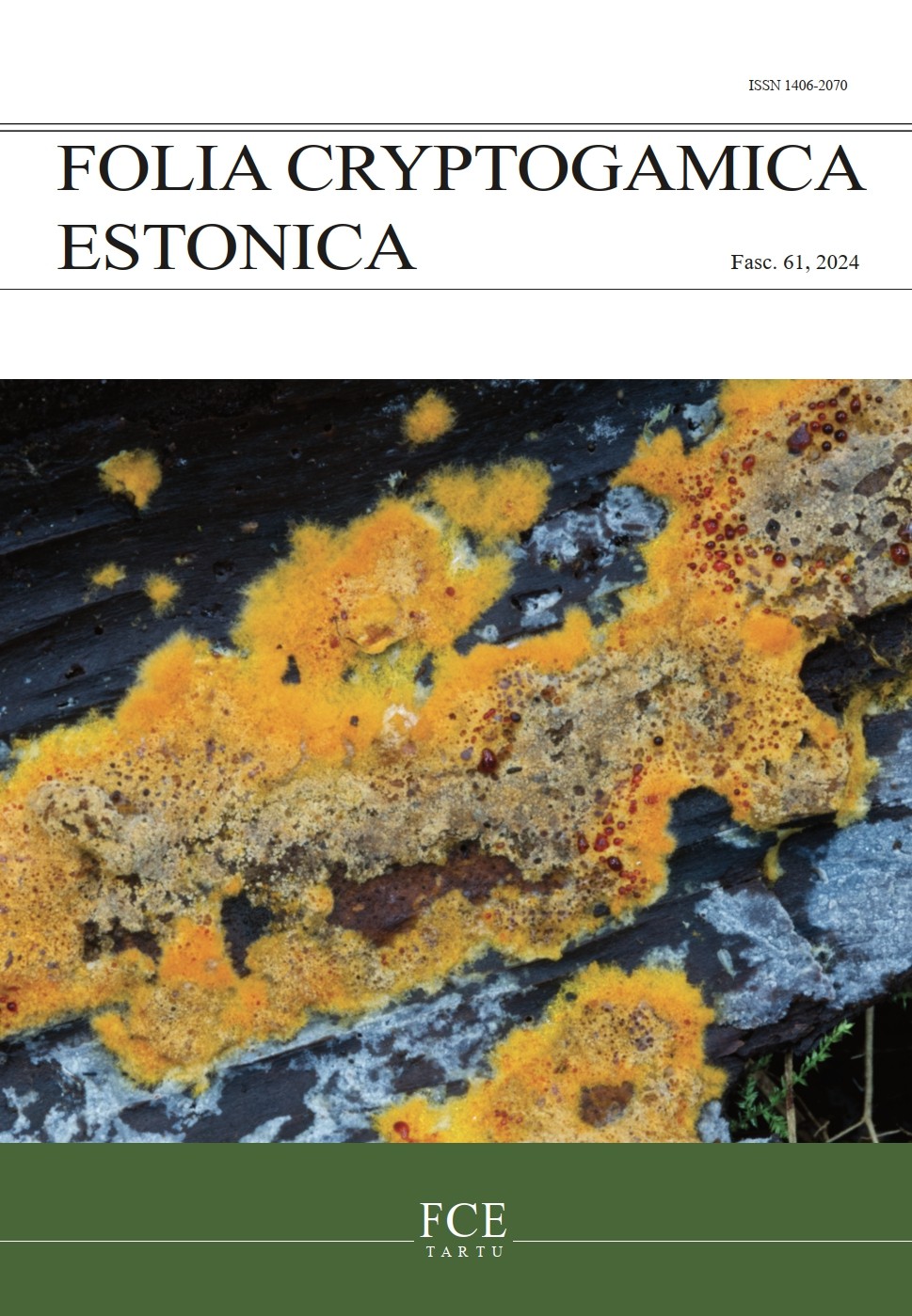Tylopilus dunensis (Boletaceae, Basidiomycota): notes on morphological, phylogenetical and distributional aspects
DOI:
https://doi.org/10.12697/fce.2024.61.01Keywords:
Agaricomycetes, Boletales, Neotropic, taxonomyAbstract
Tylopilus is a worldwide distributed genus of boletes with about 100 known taxa, of which at least 16 are from Brazil and Guyana. Tylopilus dunensis, a species originally described from sand dune habitats in the state of Rio Grande do Norte in northeastern Brazil, has now been recovered in a ‘tabuleiro’ (i.e., tableland forest) from Paraíba. The main phenetic features of this still poorly known species are the orange to orange-ochraceous pileus with yellowish brown margins, unchanging pileus context, the pale cream hymenophore with wide pores, the yellowish stipe, the small and narrow basidiospores, and the long and frequent dextrinoid pseudocystidioid pleurocystidia. After the discovery of the phylloporoid tube trama in our specimens, we emended tube trama type of T. dunensis.


